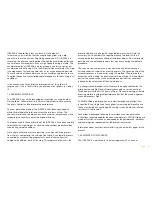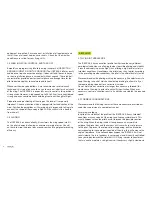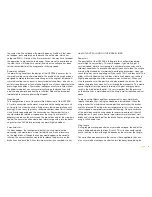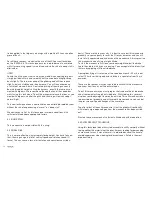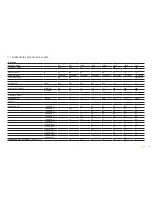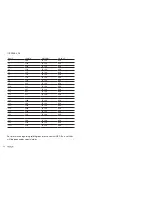
9
the same side. The collapse will normally open by itself but if that does
not happen, pull completely on the brake line on the side, which has
collapsed (100%). do this with a firm movement. You may have to repeat
this operation to provoke the re-opening. Take care not to over-brake on
the side that is still flying (turn control) and when the collapse has been
solved; remember to let the wing recover its flying speed.
symmetric collapse
In normal flying conditions the design of the ICepeaK 8 ensures that a
symmetric collapse is quite improbable. The profile of the wing has been
designed to widely tolerate extreme changes in the angle of incidence. a
symmetric collapse may occur in heavy turbulent conditions, on entry or
exit of strong thermals or lack of adapting the use of the accelerator to the
prevailing air conditions. symmetrical collapses usually re-inflate without
the glider turning but you can symmetrically apply the brake lines with
a quick deep pump to quicken the re-inflation. release the brake lines
immediately to recover optimum flight speed.
Negative spin
This configuration is out of the normal flight behaviour of the ICepeaK
8. Certain circumstances however, may provoke this configuration such
as trying to turn when the wing is flying at very low speed (while heavily
braking). It is not easy to give any recommendations about this situation
since it varies depending on the circumstances. remember that you
should restore the relative air speed over the wing. To achieve this,
progressively reduce the pressure on the brake lines and let the wing gain
speed. The normal reaction would be a lateral surge with a turn tendency
no greater than 360º before restoring to normal flight conditions.
parachutal stall
If it does happen, the feeling would be that the wing would not be
advancing; you would feel a kind of instability and a lack of pressure
on the brake lines, although the canopy would appear to be correctly
inflated. The correct reaction would be to release the pressure on the
brake lines and push the a lines forward or rather lean your body to any
side WITHoUT pUllING oN THe BraKe lINes.
deep stall
The possibility of the ICepeaK 8 falling into this configuration during
normal flight is very unlikely. This could happen if you are flying at a
very low speed, whilst over steering in a number of manoeuvres and in
turbulent conditions. To provoke a deep stall you have to take the wing to
minimum flight speed by symmetrically pulling the brake lines, when you
reach this point, continue pulling until you reach 100% and then hold. The
glider will first fall behind you and then situate itself above you, rocking
slightly, depending on how the manoeuvre was carried out. When you
start to provoke a stall, be positive and do not doubt an instant. do not
release the brake lines when half way through the manoeuvre. This would
cause the glider to surge violently forward with great energy and may
result in the wing below the pilot. It is very important that the pressure
on the brake lines is maintained until the wing is well established vertical
above.
To regain normal flight conditions, progressively and symmetrically
release the brake lines, letting the speed be re-established. When the
wing reaches the maximum advanced position ensure that the brakes
are fully released. The wing will now surge forward, this is necessary so
that air speed is completely restored over the wing. do not over brake
at this point because the wing needs to recover speed to quit the stall
configuration. If you have to control a possible symmetrical front stall,
briefly and symmetrically pull on the brake lines and let go even when the
wing is still ahead of you.
Wing tangle
a wing tangle may happen after an asymmetric collapse, the end of the
wing is trapped between the lines (Cravat). This situation could rapidly
cause the wing to turn, although it depends on the nature of the tangle.
The correction manoeuvres are the same as those applied in the case
of an asymmetrical collapse, control the turn tendency by applying the
Summary of Contents for ICEPEAK 8
Page 1: ...USER S MANUAL ICEPEAK 8...
Page 22: ...22 11 8 FOLDING LINES PLAN...
Page 28: ...28 11 11 ATTACHMENT POINTS POSITION...
Page 29: ...29 11 12 TENSION BANDS...
Page 30: ...30 11 13 MINIRIBS...
Page 31: ...31 11 14 DIAGONALS...
Page 32: ...32 11 15 INLET SHAPE...
Page 33: ...33 12 CERTIFICATION SPECIMEN TEST ICEPEAK 8 22 ICEPEAK 8 24...
Page 34: ...34 ICEPEAK 8 26...





